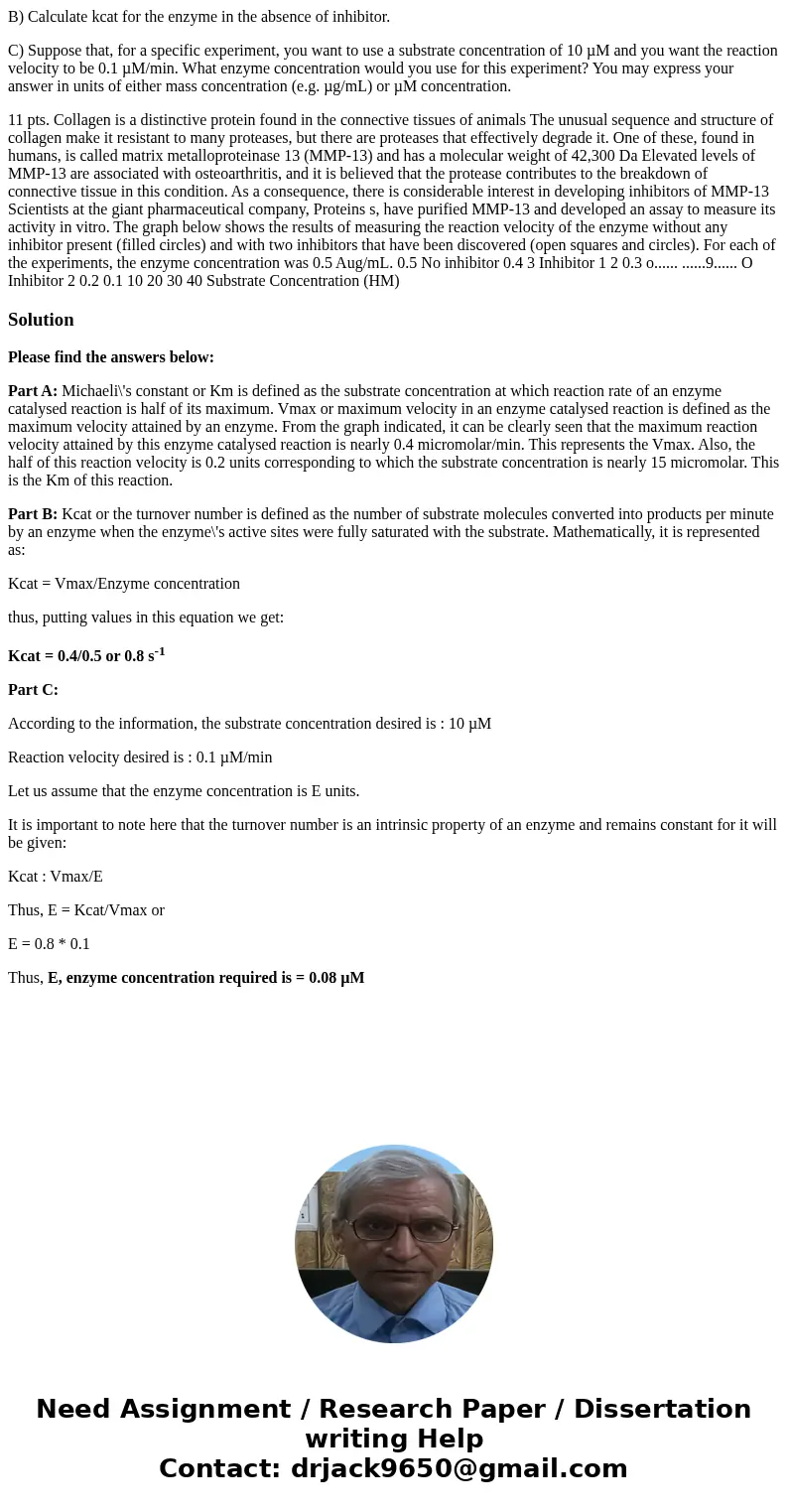B Calculate kcat for the enzyme in the absence of inhibitor
B) Calculate kcat for the enzyme in the absence of inhibitor.
C) Suppose that, for a specific experiment, you want to use a substrate concentration of 10 µM and you want the reaction velocity to be 0.1 µM/min. What enzyme concentration would you use for this experiment? You may express your answer in units of either mass concentration (e.g. µg/mL) or µM concentration.
11 pts. Collagen is a distinctive protein found in the connective tissues of animals The unusual sequence and structure of collagen make it resistant to many proteases, but there are proteases that effectively degrade it. One of these, found in humans, is called matrix metalloproteinase 13 (MMP-13) and has a molecular weight of 42,300 Da Elevated levels of MMP-13 are associated with osteoarthritis, and it is believed that the protease contributes to the breakdown of connective tissue in this condition. As a consequence, there is considerable interest in developing inhibitors of MMP-13 Scientists at the giant pharmaceutical company, Proteins s, have purified MMP-13 and developed an assay to measure its activity in vitro. The graph below shows the results of measuring the reaction velocity of the enzyme without any inhibitor present (filled circles) and with two inhibitors that have been discovered (open squares and circles). For each of the experiments, the enzyme concentration was 0.5 Aug/mL. 0.5 No inhibitor 0.4 3 Inhibitor 1 2 0.3 o...... ......9...... O Inhibitor 2 0.2 0.1 10 20 30 40 Substrate Concentration (HM)Solution
Please find the answers below:
Part A: Michaeli\'s constant or Km is defined as the substrate concentration at which reaction rate of an enzyme catalysed reaction is half of its maximum. Vmax or maximum velocity in an enzyme catalysed reaction is defined as the maximum velocity attained by an enzyme. From the graph indicated, it can be clearly seen that the maximum reaction velocity attained by this enzyme catalysed reaction is nearly 0.4 micromolar/min. This represents the Vmax. Also, the half of this reaction velocity is 0.2 units corresponding to which the substrate concentration is nearly 15 micromolar. This is the Km of this reaction.
Part B: Kcat or the turnover number is defined as the number of substrate molecules converted into products per minute by an enzyme when the enzyme\'s active sites were fully saturated with the substrate. Mathematically, it is represented as:
Kcat = Vmax/Enzyme concentration
thus, putting values in this equation we get:
Kcat = 0.4/0.5 or 0.8 s-1
Part C:
According to the information, the substrate concentration desired is : 10 µM
Reaction velocity desired is : 0.1 µM/min
Let us assume that the enzyme concentration is E units.
It is important to note here that the turnover number is an intrinsic property of an enzyme and remains constant for it will be given:
Kcat : Vmax/E
Thus, E = Kcat/Vmax or
E = 0.8 * 0.1
Thus, E, enzyme concentration required is = 0.08 µM

 Homework Sourse
Homework Sourse